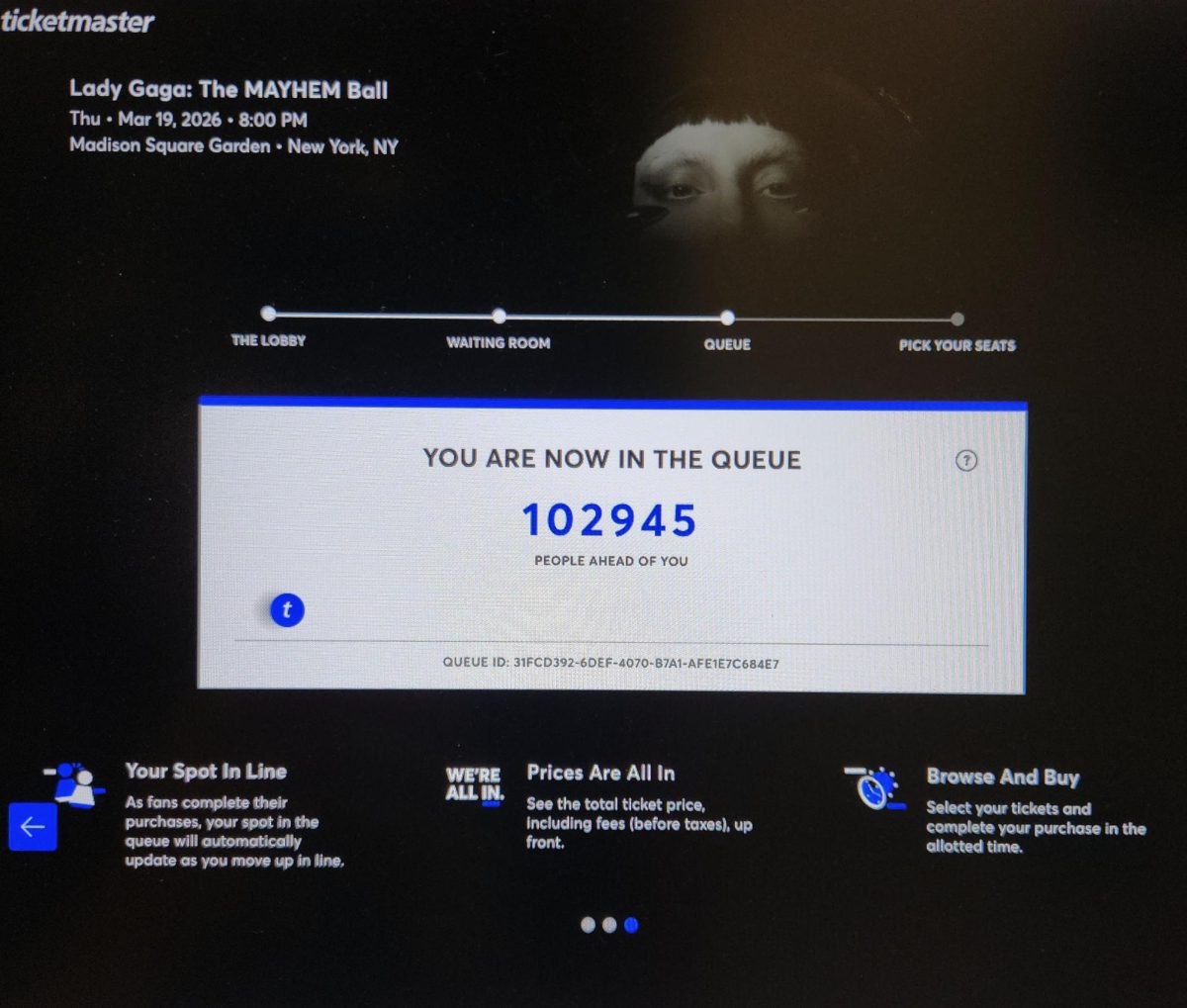The first week I was in Budapest, I took the subway to school every morning. As I rode down the escalator to the platform, there was a large blue poster sandwiched between a McDonald’s ad and Spar ad. The poster was IKEA blue with “Tudta?” (“Did you know?’) in yellow lettering at the top. These posters were government-sponsored. They looked non-imposing, informational. The rest of this poster read: “Tudta? A bevándorlási válság kezdete óta Európában több mint 300-an haltak meg terrortámadásban. Népszavazás 2016. Oktober 2.” This translates to “Did you know? Since the beginning of the European migrant crisis more than 300 people have been killed in terrorist attacks. People’s Referendum 2016. October 2.”
For the past few months, ads like this were all over Hungary: posters, billboards, newspaper ads. I would round a corner to see a mile of “Tudta?” banners hanging from every streetlamp. They weren’t just confined to Budapest. Every town I visited in Hungary had a billboard stretched out. It was the first thing I saw when I got off the train. The government spent $36 million on propaganda. All leading up to a referendum (népszavás) on October 2 in which the people of Hungary voted on whether to accept the EU’s recent migration policies. The language on the ballot read: “Do you want the European Union to be able to mandate the obligatory resettlement of non-Hungarian citizens into Hungary even without the approval of the National Assembly?”
This referendum exemplifies a surge of right-wing populism in Hungary under the Fidesz (pronounced “Fee-dess”) administration and prime minister Viktor Orbán. As a foreigner, experiencing this referendum has shaped how I understand post-Brexit Europe. As an American, I can’t help but see parallels between Orbán and Trump: the atmosphere of nationalism, xenophobia, racism, Islamophobia, etc. that they promote. I’ll try and explain how I experienced this referendum as best I can.
In 2006, tapes were released of a private speech in which then-prime minister Ferenc Gyurcsány of the Magyar Szocialista Párt (MSZP)—a Hungarian social-democratic party—heavily denounced his own party and admitted to having lied to win the 2006 election. Riots broke out in Budapest, including many incited by Fidesz. Gyurcsány resigned and created Demokratikus Koalíció, a center-left party that split off from MSZP and significantly weakened the party. In 2010, Orbán won in a landslide victory. Left-wing parties became even more splintered and weakened. In 2011, Orbán redrafted the constitution (adopted in 1990 after the collapse of the USSR), including a revision of Hungary’s voting system that favors the incumbent majority in parliamentary elections. As a result, Fidesz dominated the 2014 elections with 133 seats out of 199. Thirty-eight seats went to Unity, a coalition of all the small liberal or socialist parties (MSZP included) and 23 seats to Jobbik, Hungary’s radical-right party (often described as fascist and neo-Nazi).
In 2015, with an influx of refugees, the EU proposed a system of quotas for member states. This was meant to alleviate the burden of Greece, Italy, Sweden and Germany, countries that take a disproportionate amount of refugees. Hungary’s quota was set to be 1,294, less than 1 percent of 160,000 migrants in question. As of yet, Hungary has granted 146 people refugee status (as opposed to 14,413 in neighboring Austria.) But most Hungarians choose to remember when tens of thousands of migrants were funneled through Budapest’s main train station, Keleti Pályaudvar, on their way west this time last year. After Brexit, Orbán followed suit with his own referendum aimed at stirring anti-EU sentiment in Hungary. Just like in the UK, xenophobia, racism and Islamophobia fueled anti-EU voters. Fidesz, in control of the government and most of the newspapers in the country, ran anti-migrant advertising campaigns and worked to silence those that dissented. They forced the closure of the oldest leftist news source Népszabadság (literally People’s Freedom) last week without any notice. The only opposition to government propaganda was a rogue poster campaign by the satirical Two-Tailed Dog Party (MKKP).
The way referendums work is if more than 50 percent of the population votes correctly — clearly voting either Igen (Yes) or Nem (No) — then the referendum is valid and whichever choice has more votes wins. Igen voters knew they couldn’t win outright. Instead, leftist parties urged voters to stay home and hope the vote is invalid when not enough people show up. MKKP urged voters to show up and vote Nemigen (both No and Yes) or just draw a dick on the ballot. Come October 2, this strategy succeeded: only 41 percent of people showed up to vote correctly and the referendum was declared invalid. However, Orbán is using this to his advantage. Of the valid votes, 98 percent voted “No,” against migrants and the EU. The next morning on the subway, all the newspapers read “MEGÜZENTÜK BRÜSSZELNEK: 98% NEM! A KÉNYSZERBETELEPÍTÉSRE” (WE SHOWED BRUSSELS: 98 PERCENT NO! TO FORCING MIGRANTS ON US.) Orbán, supposedly listening to the cries of his people, now proposes to once more redraft the constitution to disregard the EU’s migrant quotas. If they do so, Hungary could face a $250,000 fine per migrant. Some, like Luxembourg’s foreign minister, are even calling for Hungary to be kicked out of the EU. Hungary’s economy would collapse without aid from Brussels. And yet Orbán keeps pushing.
It’s a daily occurrence for me that I’m talking to someone, they notice my accent, they ask me where I’m from, then they proceed to tell me how much they love Donald Trump. There are so many parallels between Trump and Orbán. For one, he’s building a wall. While hundreds of thousands of people tried to cross Hungary to reach asylum in 2015, Orbán put up a border fence along the Serbian border. Austria put one up as well. Now, Orbán is proposing extending and making the first fence permanent.
Orbán plays on Hungarians’ sense of loss of the old Kingdom of Hungary in order to promote a narrow, prejudiced notion of nationalism. Hungary lost three fourths of its land in the Treaty of Trianon. Today, many Hungarians still mourn what the country used to be. In many ways this feeling is valid: communities of Hungarians were severed and divided between neighboring countries. When Orbán extended the right to vote to three million ethnic Hungarians in regions of Romania, Serbia, Slovakia and Ukraine that were once part of the Kingdom of Hungarian, in part he was affirming this feeling of loss. But, he was also gaining voters by laying claim to lands that are a hundred years removed from Hungary, dwelling in the Hungary that used to be. Orbán uses these irredentist sentiments to create a sense of patriotism based around a white, Christian national identity. The 2011 redraft of the constitution exemplifies this. Part of the preamble reads: “We recognise the role of Christianity in preserving nationhood” and “We commit to promoting and safeguarding our heritage, our unique language, Hungarian culture…” The heritage of the Kingdom of Hungary (which was much more racially and ethnically diverse than modern-day Hungary) is constructed to appear white and Christian. Rhetoric of safeguarding implies that this constructed heritage is being threatened from some Other. At best, this plays out in the promotion and safeguarding of the Magyar heritage and language from globalization and American influence. At worst, this justifies the exclusion of refugees, Muslims and Roma people. Most people proudly wear the green, white and red of the Hungarian flag on t-shirts or backpacks. But, a few wear the red, white and blue of the Confederate flag. Many want to Make Hungary Great Again.
There’s so many lovely people I’ve met here in Hungary: my perfectly sane Hungarian floormates, my friend Emese who talks about her Marxist anarchist group in the Communist ’80s, the Syrians I work with at the local refugee center who know enough languages to inspire me to learn Hungarian, the boy I saw spraypaint “BULLSHIT” over a Tudta poster or my program coordinator Anna who’s been yelling profanities about Orbán and the referendum for the past two months. But, by and large, Hungary has given into the fear and hate created by Orbán. The future doesn’t look bright. The constitution will likely be redrafted. Poland, Slovakia and the Czech Republic may soon follow with their own referendums. The AFD continues to gain popularity in Germany, Norbert Hofer may win Austria, and every other right-wing party in Europe becomes increasingly populist. US polls show Trump in decline. I’m not sure I’m sold on Hillary, but I sure as hell am not voting for anyone else. I just hope enough Americans resist the same hateful messages that have taken over here in Hungary to do the same.







Claire Bower • Sep 12, 2019 at 12:01 am
Why YouTube video clips are shared everywhere? I think one motive is that these are effortless to get embed code and paste that script somewhere you would like.
Evan Skinner • Sep 10, 2019 at 5:32 pm
This paragraph is really a pleasant one it helps new internet people, who are wishing for blogging.
Sally Butler • Sep 5, 2019 at 3:53 am
Many thanks to you for sharing these kind of wonderful content. In addition, the best travel in addition to medical insurance strategy can often relieve those concerns that come with visiting abroad. A new medical crisis can in the near future become costly and that’s sure to quickly put a financial burden on the family’s finances. Setting up in place the perfect travel insurance offer prior to leaving is definitely worth the time and effort. Thank you